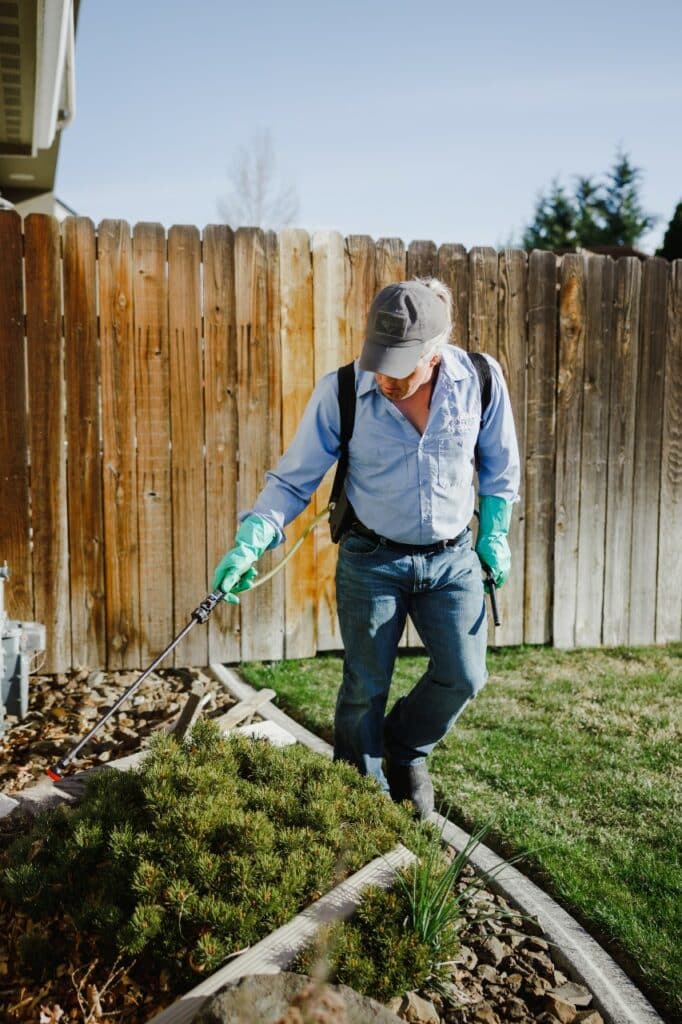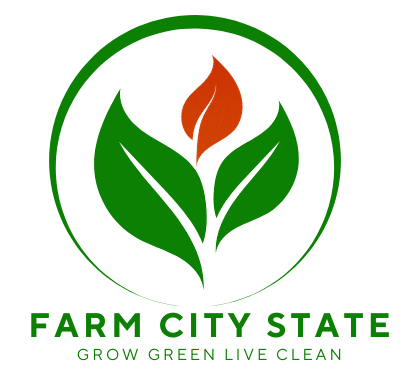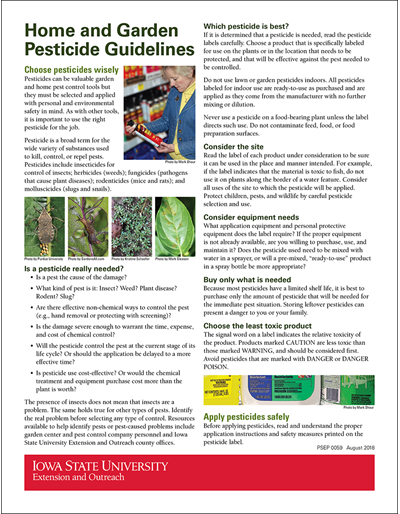As an Amazon Associate, I earn from qualifying purchases.
Using tools for pest control in home gardens is essential for maintaining healthy plants. Tools make the process easier and more effective.
Home gardens often attract pests that damage plants. Managing these pests can be challenging without the right tools. Effective pest control tools can help you maintain a beautiful and productive garden. They allow you to target pests precisely, reducing damage to your plants.
In this guide, we will explore how to use these tools effectively. From simple hand tools to advanced equipment, each has its role in keeping your garden pest-free. By the end of this blog, you will have the knowledge needed to protect your garden with confidence. Let’s dive in and learn more about these useful tools.

Pest Control
Pest control in home gardens is essential for maintaining healthy plants. It helps prevent the spread of diseases and ensures a good harvest. Using the right tools can make pest control easy and effective. Here, we will introduce you to pest control and explain its importance. We will also discuss common garden pests you might encounter.
Importance Of Pest Control
Pest control helps protect your garden from harmful insects. It keeps your plants healthy and productive. Without pest control, insects can damage leaves, stems, and roots. This can stunt plant growth or kill the plants.
Effective pest control also reduces the risk of plant diseases. Many pests carry viruses and bacteria. These can infect your plants and spread quickly. By managing pests, you limit the chance of disease outbreaks.
Another benefit is the protection of your investment. Garden plants require time, effort, and money. Pest control ensures these resources are not wasted. It helps you enjoy a bountiful garden.
Common Garden Pests
| Pest | Description | Control Methods |
|---|---|---|
| Aphids | Small, sap-sucking insects | Neem oil, insecticidal soap |
| Slugs and Snails | Soft-bodied, slimy creatures | Beer traps, copper tape |
| Caterpillars | Larvae of butterflies and moths | Bt spray, hand-picking |
Here are some common garden pests you might face. Aphids are small insects that suck sap from plants. They weaken the plant and spread diseases. Slugs and snails eat leaves and stems. They are most active at night. Caterpillars are larvae of butterflies and moths. They chew on leaves and can cause significant damage.
To control aphids, use neem oil or insecticidal soap. For slugs and snails, try beer traps or copper tape. To manage caterpillars, use Bt spray or hand-pick them off your plants.
Understanding the common pests in your garden can help you choose the right control methods. This knowledge ensures your garden remains healthy and productive.

Identifying Garden Pests
Garden pests can turn a beautiful garden into a nightmare. Knowing how to identify these pests is crucial for effective pest control. Quick identification helps you take the right steps to save your plants.
Visual Signs Of Infestation
Look for visible signs on your plants. Holes in leaves, yellowing, and stunted growth are common indicators. Spotting pests early can save your plants.
Check for the following signs:
- Chewed leaves: Caterpillars and beetles often leave holes.
- Sticky residue: Aphids leave a sticky substance called honeydew.
- Yellow spots: Spider mites cause yellow speckles on leaves.
- Wilting plants: Root pests can cause wilting even with enough water.
Using Identification Guides
Identification guides are useful for pinpointing specific pests. They contain pictures and descriptions to help you recognize different pests. Use online guides or books for reference.
Here are a few common resources:
- Online databases: Websites like BugGuide.net offer extensive insect databases.
- Gardening books: Books like “The Organic Gardener’s Handbook of Natural Pest and Disease Control” are great resources.
- Mobile apps: Apps such as Plantix can identify pests from photos.
Using these tools can make identifying garden pests easier and more accurate. Quick identification leads to faster treatment and healthier plants.
Natural Pest Control Methods
Natural pest control methods provide an eco-friendly way to protect your home garden. They help reduce the use of harmful chemicals. This approach keeps your garden safe for beneficial organisms and pets. Let’s explore some effective natural pest control techniques.
Beneficial Insects
Beneficial insects are natural predators of common garden pests. Ladybugs, for example, eat aphids. Lacewings and predatory beetles also help control pest populations. Encourage these insects by planting flowers like marigolds and daisies. A diverse garden attracts a variety of beneficial insects.
Spiders are another useful ally. They capture and eat many types of insects. Avoid using broad-spectrum pesticides, as they harm beneficial insects. Instead, let these natural predators do their job.
Organic Sprays
Organic sprays are another effective way to manage pests. Neem oil is a popular choice. It disrupts the life cycle of many insects. Mix neem oil with water and apply it to affected plants. It’s safe for humans and pets.
Insecticidal soap is another option. It works by suffocating soft-bodied insects like aphids and spider mites. Make your own by mixing water with mild dish soap. Spray it directly on pests for immediate results.
Garlic spray can deter pests as well. Blend garlic with water and strain the mixture. Spray it on plants to repel insects. These organic solutions are safe and effective, maintaining the health of your garden.
Chemical Pest Control
Using chemical pest control in your home garden can be effective. It helps protect your plants from harmful insects and diseases. This method involves using pesticides to eliminate pests. Proper use ensures safety for your plants, your family, and the environment.
Choosing The Right Pesticide
Selecting the correct pesticide is crucial. Research the specific pests affecting your garden. Read the labels on pesticide products. Look for the active ingredients that target your pests. Consider the pesticide’s toxicity level. Choose one that is effective yet safe for your garden. Here are some common types:
- Insecticides: Targets insects like aphids, beetles, and caterpillars.
- Herbicides: Kills unwanted plants or weeds.
- Fungicides: Controls fungal problems like mildew and rust.
Safe Application Techniques
Applying pesticides correctly is essential for safety. Follow these steps:
- Read the instructions on the pesticide label.
- Wear protective clothing, gloves, and a mask.
- Mix the pesticide as directed, using the recommended amount.
- Apply during calm weather to avoid drift.
- Store pesticides in a safe place, away from children and pets.
Here is a table summarizing essential safety steps:
| Step | Details |
|---|---|
| Read Instructions | Understand the proper usage and dosage. |
| Wear Protective Gear | Use gloves, mask, and protective clothing. |
| Mix Properly | Follow the label’s mixing instructions. |
| Apply Safely | Use in calm weather to prevent drift. |
| Store Safely | Keep away from children and pets. |
By choosing the right pesticide and applying it safely, you can protect your garden effectively. Always prioritize safety and follow guidelines strictly.
Using Traps And Barriers
Pest control in home gardens is crucial. Using traps and barriers is an effective method to manage pests. These methods are eco-friendly and reduce the need for chemicals. Learn how to use them for a healthier garden.
Types Of Traps
There are several types of traps for garden pests. Sticky traps catch flying insects. Place them near plants. They are easy to use and monitor. Pheromone traps attract specific pests. These traps use scents to lure insects. They are excellent for controlling moths and beetles.
Live traps capture larger pests. These traps are for animals like squirrels and rabbits. Check them daily and release the animals far from your garden. Homemade traps can also be effective. Use a jar with bait for slugs and snails. They fall in and cannot escape. Choose the right trap for your garden’s specific needs.
Installing Physical Barriers
Physical barriers prevent pests from entering your garden. They are simple and effective. Install row covers to protect plants. These covers are lightweight and allow sunlight through. They keep insects away from the plants.
Use netting to guard against birds and larger animals. Make sure the netting is secure. This will prevent animals from sneaking in. Fencing is another option for larger pests. A sturdy fence keeps out deer and rabbits. Bury the bottom of the fence to stop burrowing animals.
Mulch can act as a barrier, too. It deters certain pests and helps retain soil moisture. Regularly check and maintain your barriers. This ensures they stay effective throughout the growing season.

Integrated Pest Management
Integrated Pest Management (IPM) is a strategy for controlling pests in home gardens. It combines different methods to manage pests effectively. IPM focuses on long-term prevention and control. It uses a combination of biological, cultural, physical, and chemical tools.
Combining Methods
Combining methods is key to IPM. Use biological controls like natural predators to manage pests. Ladybugs, for instance, eat aphids. This reduces the pest population naturally. Cultural controls involve rotating crops. This disrupts pest life cycles. Physical controls include barriers. For example, use row covers to protect plants from insects.
Monitoring And Adjusting
Monitoring and adjusting are essential in IPM. Regularly inspect your garden for pests. Identify the type and number of pests present. Adjust your methods based on this information. If pest numbers increase, consider adding new controls. Use traps to monitor pest activity. Keep records of what works. Adjust your strategy as needed. IPM is a flexible and dynamic approach.
Preventative Measures
Preventative measures are crucial for maintaining a pest-free home garden. They reduce the need for chemical treatments. Healthy plants resist pests better. Using tools effectively can help with these measures.
Soil Health
Healthy soil is the foundation of a pest-free garden. Test your soil regularly. Use compost and organic matter to enrich it. Good soil promotes strong plant growth. Strong plants are less likely to be attacked by pests.
Water your garden properly. Overwatering can lead to root rot. Underwatering can stress plants. Both conditions attract pests. Mulch your garden beds. Mulching helps retain soil moisture. It also reduces the number of weeds. Weeds can harbor pests.
Crop Rotation
Crop rotation helps prevent pest problems. Do not plant the same crop in the same spot every year. Pests that attack one type of plant may not attack another. Rotating crops disrupts pest life cycles.
Plan your garden layout. Group plants by their family. Rotate these groups each year. This practice also helps improve soil health. Different plants use different nutrients. Rotating them prevents nutrient depletion.
Use cover crops during the off-season. Cover crops add nutrients to the soil. They also prevent soil erosion. Some cover crops can even repel pests. Consider adding them to your garden plan.
Maintaining A Pest-free Garden
Maintaining a Pest-Free Garden is essential for healthy plants and bountiful harvests. Using the right tools and techniques can make this task easier. By staying vigilant and making adjustments, you can keep pests at bay and ensure your garden thrives.
Regular Inspections
Inspect your garden often. Look for signs of pests like holes in leaves, droppings, or damaged plants. Check under leaves and around the base of plants. Use a magnifying glass to spot tiny insects.
Early detection is key. The sooner you find pests, the easier it is to control them. Make it a habit to inspect your garden at least once a week. Keep a journal of your findings to track any patterns or recurring issues.
Seasonal Adjustments
Each season brings different pests. Adjust your pest control methods accordingly. In spring, focus on aphids and caterpillars. Summer might bring beetles and spider mites. Fall is the time to watch for slugs and snails.
Use the table below to know which pests to watch for each season:
| Season | Common Pests | Control Methods |
|---|---|---|
| Spring | Aphids, Caterpillars | Neem oil, Handpicking |
| Summer | Beetles, Spider Mites | Insecticidal soap, Beneficial insects |
| Fall | Slugs, Snails | Beer traps, Diatomaceous earth |
Adjust your pest control methods as needed. Keep notes on what works best for your garden. This will help you be better prepared for the next season.
Frequently Asked Questions
What Are The Best Tools For Pest Control In Home Gardens?
Handheld sprayers, insecticidal soaps, and neem oil are great tools for pest control in home gardens.
How Often Should I Use Pest Control Tools?
Use pest control tools once a week or as needed. Check plants regularly.
Are Natural Pest Control Tools Effective?
Yes, natural tools like neem oil and insecticidal soaps are effective and safe for home gardens.
Can I Use Household Items For Pest Control?
Yes, items like vinegar and baking soda can help control pests. They are safe and effective.
What Precautions Should I Take When Using Pest Control Tools?
Wear gloves and follow instructions on the label. Keep tools away from children and pets.
Conclusion
Using pest control tools effectively can protect your garden. Start with identifying pests correctly. Choose the right tool for each pest. Follow instructions carefully for safety. Regular monitoring helps in early detection. Consistent efforts lead to a healthier garden. Happy gardening!

